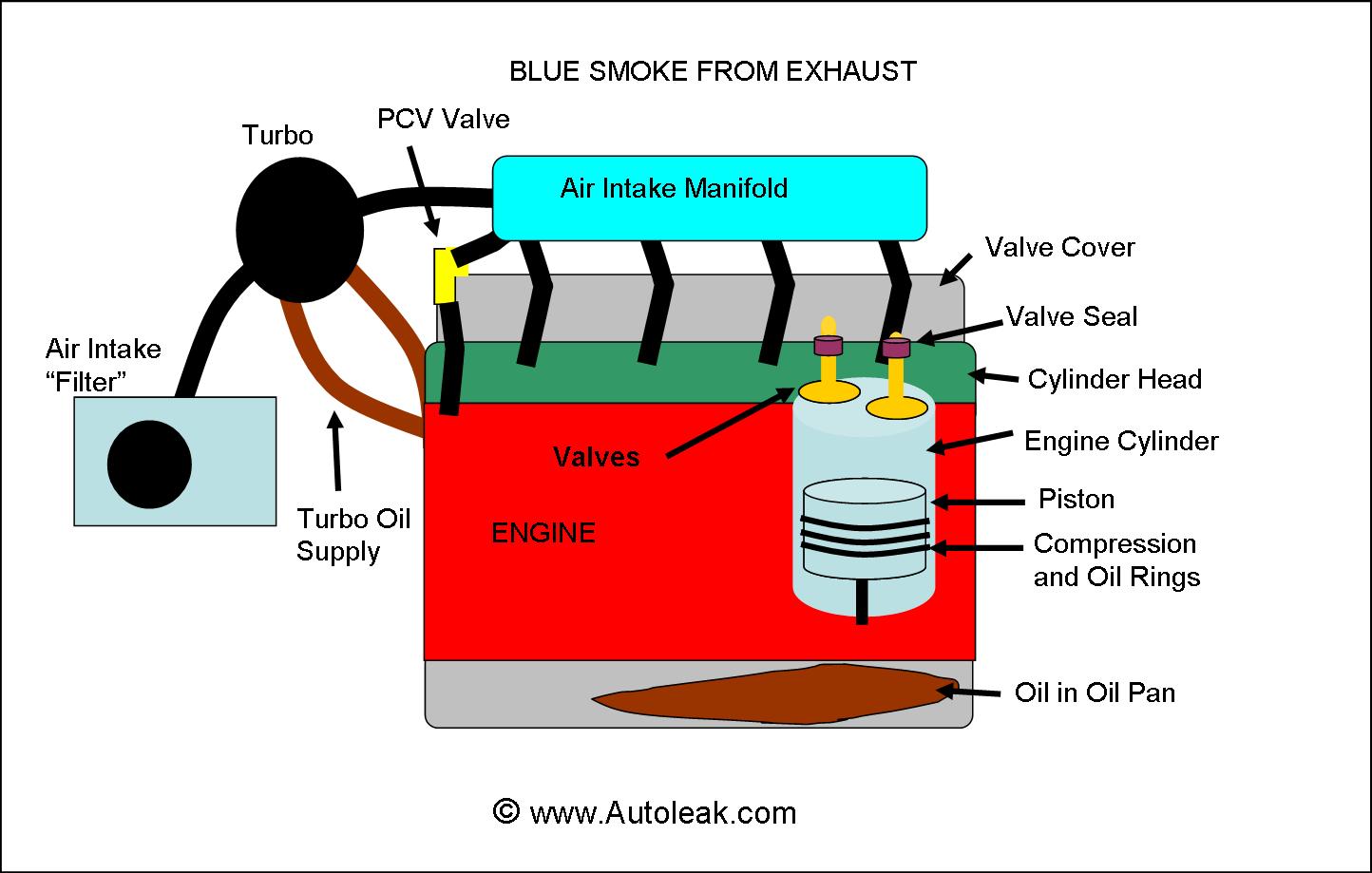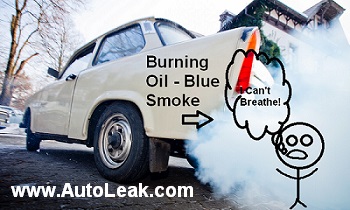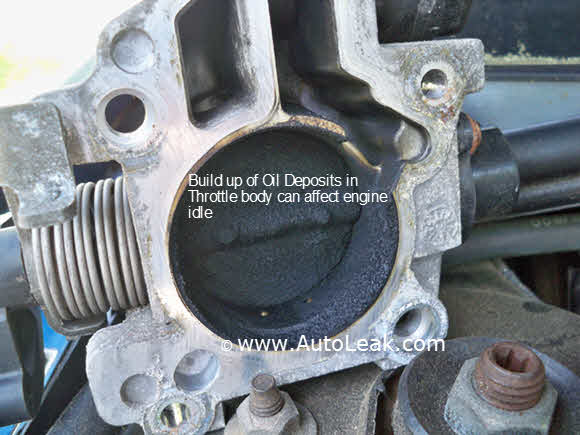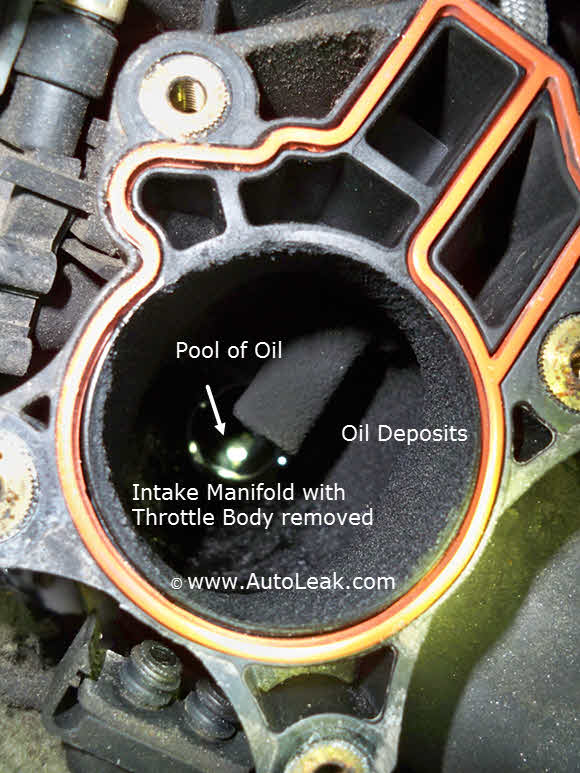Blue Smoke From Exhaust

Why you see Blue Smoke From Exhaust
If you are seeing Blue Smoke From Your Exhaust this means that your car engine is burning oil. It really does not smell very good and is not good for your health to breath in. This smoke should not be confused with White Smoke you will see when a car first starts up. That White Smoke is just water vapor(Steam) that has collected while the car was parked and will go away as the car engine warms up.
Some self help web sites will state that your engine is worn but it may not be.
Below are listed some of the reasons for the Blue Smoke.

©Sandor Jackal/Dollar Photo Club
1 - Lots of Exhaust Smoke when starting car (Not Diesel) - Valve Seals Gone Bad
If Smoke from Exhaust appears after you car has been parked for a while and the engine is not a diesel (see note 1B on diesel below) this would suggest Bad Valve Seals.
If the Valve Seals are bad, oil has probably dripped into the engine while it was parked. Engines have valves that open and close. The Valves are opened mechanically by pressure being applied to them by a Rocker Arm. They let Gasoline and Air into the Engine. They let Exhaust Gases out of the engine after the Gasoline and Air have been burnt.
The top of the Valves where the pressure is applied are covered in Oil. There are Valve Seals to stop this Oil from coming into the engine. When these Valve Seals wear out, they let the Oil into the engine. Oil going into the engine is then burnt along with the Gasoline and Air creating the Blue Smoke. Usually the car has to sit for a while (such as all day) with the engine not running for the oil to drain into the engine through the worn Valve Seals. Sometimes the smoke will be worse when the car is parked on a slope as this can tilt the engine, making more oil end up at the worn Valve Seals. This causes more oil than usual to end up in the engine and creates more Blue Smoke on starting the engine.
How to fix Valve Seals
Valve Seals are not too hard to replace and can be done at home by someone who comfortable working on engines. Big concern with replacing Valve Seals is to not drop the Valve into the Engine. Some people will use Compressed Air put in via the Spark Plug Opening to keep the Valve Up.
Difficulty of replacing the Valve Seals will depend on if the Engine has an Overhead Cam or not. Overhead Cam will require more work as it will have to be removed to access the Valve Stem.
Objective is to remove the Rocker Arm and spring from the Valve. Then lift the old Valve Stem Seal up the Valve Stem and Replace with the new. There are special tools that allow you to compress the Valve Spring so it can be moved out of the way.
1B - Diesel smoking on startup - Bad Glow Plug
Diesel engines use glow plugs on startup to cause ignition of diesel fuel. Glow plugs provide heat to ignite diesel fuel. Once the engine is warmed up, the glow plugs are not needed as the heat of the engine causes ignition of diesel fuel.
When a glow plug is bad, a diesel engine will produce smoke at startup until the engine has warmed up. Smoke can seem like oil is being burnt but in reality, the un-burnt diesel fuel is being pumped out the exhaust giving a cloud of smoke.
How to fix bad glow plug
Glow plugs resistance should be checked with a meter to see that they are within specifications. Recommendation is that if one is bad, all should be replaced at the same time.
2 - Blue Smoke From Exhaust all the time - Stuck PCV Valve
If Blue Smoke appears all the time your engine is running then the first thing to check is the PCV (Positive Crankcase Ventilation) Valve. If pressure builds up in the Oil Pan, the PCV Valve allows this pressure to release. The pressure is released into the Intake Manifold where the Engine gets its air for working. The Intake Manifold is also connected to your engine Air Filter. If the PCV Valve gets stuck open then it will keep mixing the air with oil and other gases from inside the engine. The oil gets mixed with the Gasoline and Air and gets burnt creating the Blue Smoke.
PCV valves are expected to be replaced at least every two years / 30,000 miles if not more often.
With a stuck PCV Valve, the throttle body and intake manifold will end up covered with oil. However note that if the crankcase is getting pressurized by worn parts of the engine, then the PCV valve is just doing its job to send oil air mixture from engine into Intake.


Fix PCV Valve
This should be a simple fix and cheap as well. Look for a tube that connects to the Intake Manifold. Follow the tube back until you find your PCV Valve. Remove the PCV Valve from the tube and replace with new one.
3 - Blue Smoke all the time - Worn Engine
If Blue Smoke from Exhaust appears all the time your engine is running then your engine is probably worn if it is not the Valve Seals or the PCV Valve. Pistons inside the engine move up and down a cylinder. These Pistons have metal rings like bracelets round the side of them. These rings help the piston form a tight seal against the cylinder. When the cylinder and or rings get worn, oil from beneath the piston can come up. The oil gets mixed with the Gasoline and Air and gets burnt creating the Blue Smoke.
Mechanics can check to see if the engine is worn. They remove the spark plug on each cylinder of the engine. Then they screw in a machine that measures compression (compression tester) into each spark plug hole (usually one cylinder at a time). The engine is then turned over on the starter. It will not start as there are no Spark Plugs. The compression tester shows the Mechanic how much compression each cylinder gets. Numbers from the compression tester can be checked against the normal numbers for that engine. If a number is lower than normal for a cylinder then that cylinder is probably worn.If you keep driving a car that is burning oil, eventually your car will stop as the Spark Plugs will get coated in oil and no longer work.
Fix Worn Engine
You can buy liquids that will attempt to fill in the worn parts of the engine. The liquids are usually added with the oil. Oil with this treatment is usually marketed for High Mileage vehicles. Sometimes they work and other times they do not.
Fixing a Worn Engine is beyond the average person. Usually most people buy a replacement engine and have it installed. Cost for this job in the USA as of 2010 is around $2,000 and up depending on make, model of vehicle.
4 - Sudden Cloud of Blue Smoke - Blown Turbo
This only applies to cars that have Turbos. When you car blows a Turbo, Blue Smoke appears in suddenly in a big cloud behind you. A Blown Turbo is either a failed oil seal in the Turbo or the Turbo casing has broken. In both cases they are now letting oil into the intake of the engine.
Fix Blown Turbo
When the Turbo Blows it is not a good idea to drive the car with the Blown Turbo. This is because the lack of oil in the Turbo will create bits of metal. The bits of metal will get in the engine. The engine will be damaged by the bits of metal.
Before fixing the turbo you need to determine what damage the Blown Turbo did. If the inside of the Blown Turbo did not break into little pieces then you may be ok. In this case you can either rebuild it or replace it. If the inside of the Blown Turbo did break into pieces then you might have engine damage. A mechanic should look at the engine before money is spent on the Turbo.
5 - Blue Smoke with loss of Transmission Fluid
Older cars/trucks with vacuum controlled automatic transmissions use a modulator to control the transmission shift. The modulator uses engine vacuum to control it. If the diaphragm or another part of the modulator fails, it allows the engine to suck in transmission fluid. Transmission fluid sucked in by the engine then gets burnt like oil causing the blue smoke out the exhaust.
Fix Transmission Modulator
Locate the transmission modulator, remove and replace with new one. The vacuum line to the transmission modulator may also need replaced if damaged by the transmission fluid.
Question or Solution not mentioned?
Use
Auto Repair Forum to ask or answer questions about car and auto repair.
Advertise your Auto/Car/Truck Repair Parts or Auto/Car/Truck Repair Business on this site.
Contact us at Advertising@AutoLeak.com
We have affordable advert solutions!
Act now to potentially reach thousands of unique people a month who are trying to repair/maintain their vehicles.